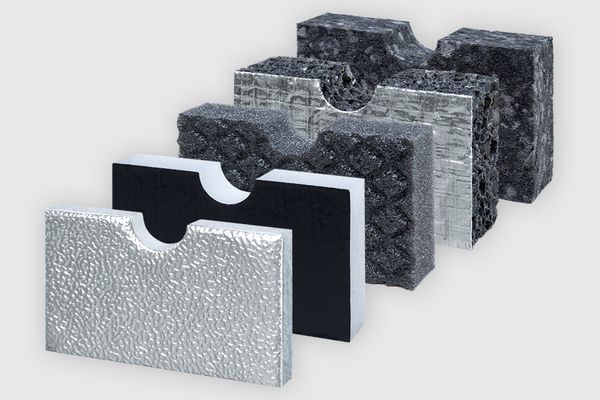Solid-borne noise: Technical sound insulation for machines and vehicles
Solid-borne noise is a form of sound transmission in which vibrations are conducted through solid materials such as metal, wood or plastic. These vibrations can manifest themselves in the form of noises that are often perceived as disturbing. Protection against solid-borne noise is particularly important in industrial applications and vehicle construction.
A distinction is made between structure-borne sound insulation and structure-borne sound damping:
- Solid-borne sound insulation aims to prevent the propagation of vibrations through design measures such as decoupling, mass increase or elastic mounting.
- Solid-borne sound damping, on the other hand, reduces the energy of the vibrations within a material, e.g. through viscoelastic layers or special damping foils that convert the vibrations into heat.
Areas of application for solid-borne sound insulation
- Machinery & vehicles: In machinery and vehicles, including buses and rail vehicles, solid-borne sound can be generated by engines, gearboxes and other mechanical components. Effective sound insulation reduces the transmission of these vibrations and ensures a quieter environment.
- Heat pumps: Heat pumps also generate structure-borne noise due to their mode of operation. Noise can be minimised through targeted measures such as the use of sound-absorbing materials.
- Medical technology: A quiet environment is essential in medical technology. Structure-borne noise can be generated by medical devices and equipment, which is why special sound insulation solutions are required here.
- Cabins/capsules and hoods: In cabins, capsules and under hoods, as used in industry, protection against structure-borne noise is important in order to improve working conditions and reduce noise pollution.
- Rail vehicles: Rail vehicles are particularly susceptible to structure-borne noise caused by movement on the tracks. Special damping materials are used here to control noise levels.
- Construction and agricultural machinery: Construction and agricultural machinery generate considerable vibrations due to the way they operate. The use of sound-absorbing materials and designs helps to reduce noise pollution.
- Room acoustics: Protection against structure-borne noise also plays a role in room acoustics. Appropriate measures can reduce sound transmission in buildings and rooms, resulting in more pleasant acoustics.
Cellofoam products for minimising solid-borne noise
Cellofoam offers a wide range of products that have been specially developed to minimise solid-borne noise. These include sound-absorbing materials that can be used effectively in the above-mentioned areas of application.
With Cellofoam's solutions, you can ensure that noise pollution from structure-borne sound is significantly reduced, creating a quieter and more pleasant environment.










